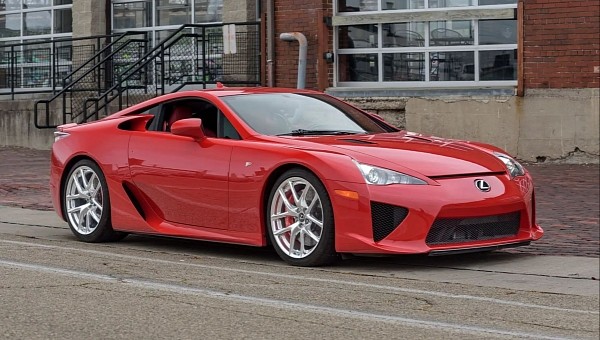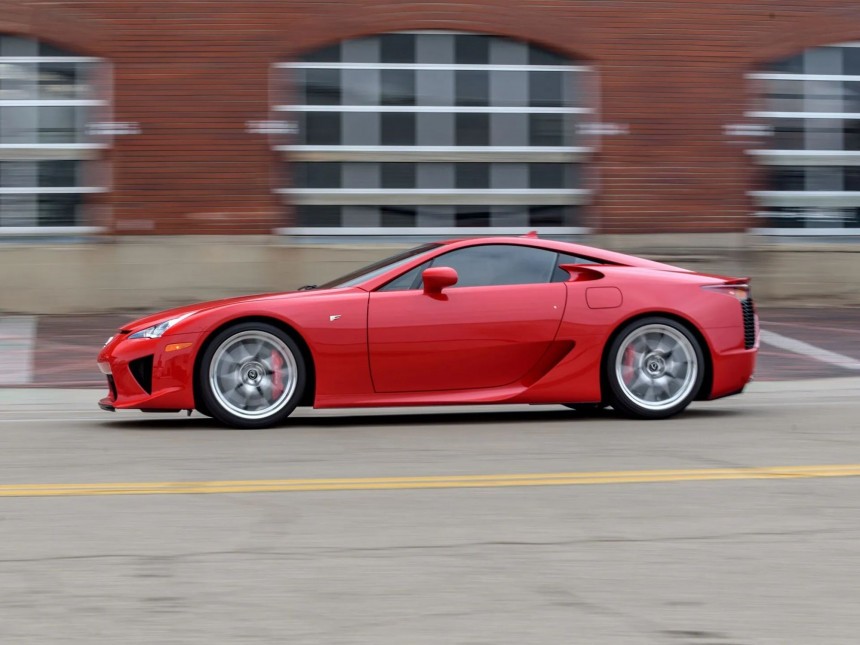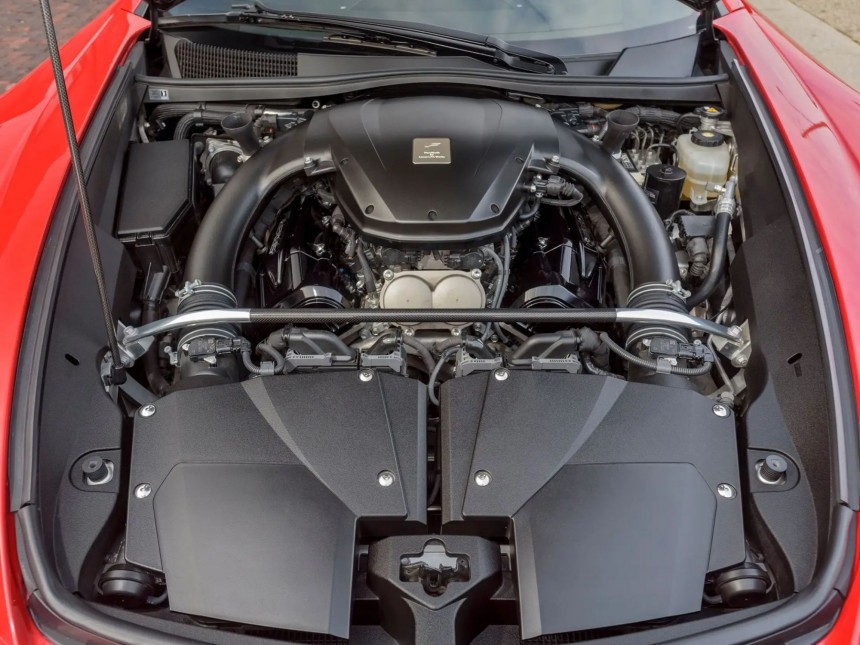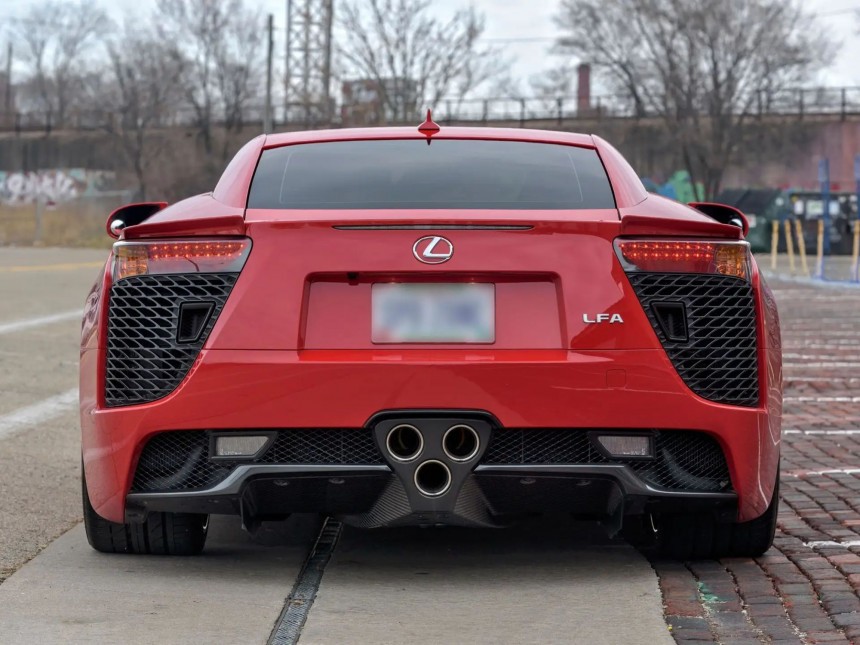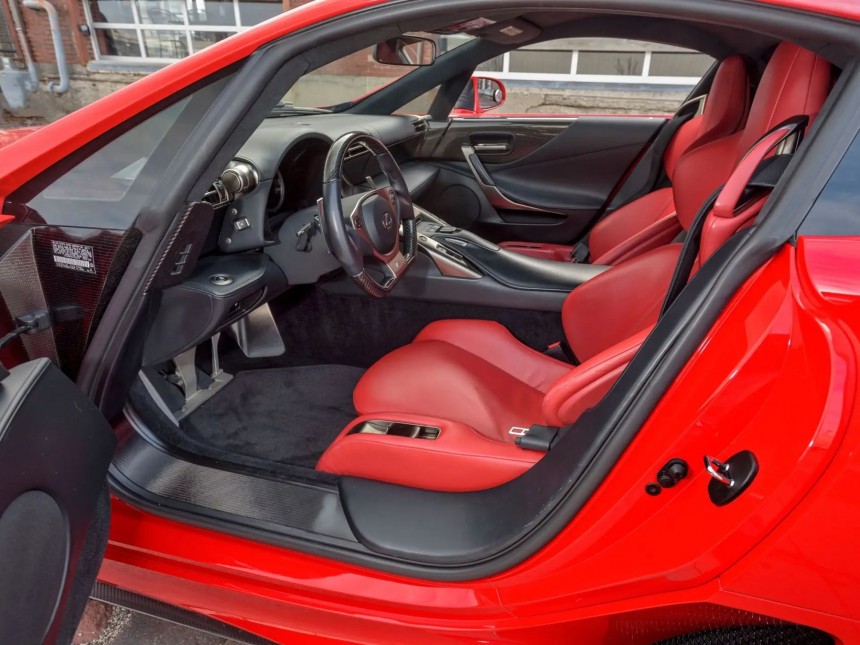What initially started in early 2000 as a relatively straightforward research and development project by Toyota Motor Corporation (TMC) resulted in the creation of the ultimate 21st-century Japanese supercar - I'm talking about the Lexus LFA. Let me tell you more about this remarkable machine and how it sealed its place in automotive history.
The Lexus LFA story begins with Toyota CEO Akio Toyoda – he wanted to build a supercar capable of challenging other big names such as Porsche, Ferrari, and Lamborghini. The team behind the vehicle worked from a blank canvas and was able to incorporate new technologies, materials, and processes. Lexus chief engineer Haruhiko Tanash was appointed as project leader.
The project's development phase ended up being very lengthy. In 2001, an exhaustive list of 500 key assets was created by TMC's highly experienced master driver Hiromu Naruse. It included everything from the shape of the steering wheel to suspension settings.
Akio Toyoda joined the LFA team in early 2002, and besides sharing his business and engineering know-how, he helped the project get approved by TMC's board. The first LFA prototype was completed in June 2003, and sixteen months later, the vehicle made its way around the Nürburgring Nordschleife circuit for the first time.
The car's first design study was presented at the Detroit Motor Show in January 2005, described as the LF-A sports car concept. It featured a sheet-aluminum body and a chassis built using a then-all-new technology of aluminum extrusions and castings held together by welds, rivets, and bonding adhesive. Part of the specs were also unveiled, such as a less than five liters V10 engine, capable of taking the car up to around 200 mph (322 kph).
The positive public feedback further fueled Lexus's ambition of creating the machine. Two years later, the concept showcased at the Detroit show was much more production-focused. Some changes were made because the team behind the LFA opted for a carbon fiber-reinforced plastic (CFRP) construction instead of aluminum. It was a first for Lexus – the modification reduced overall mass by 220 lb (100 kg) and significantly stiffened the body. The final iteration of the LF-A series, the Lexus LF-A Roadster, was presented at the Detroit motor show in January 2008.
In 2008, the car was finally adequately tested at the intense Nürburgring 24 Hours race. Still in its prototype form, it participated in the 2008 and 2009 editions, and then in production form in 2010 and 2011. Even Toyoda joined the racing team in 2008, showing his confidence in the vehicle.
On the eve of the Toyota Motor Show, Lexus announced the full specs and the official launch of the LFA. However, it announced production would start in late 2010 and be limited to 500 units. Each car would be hand-built at the Motomachi plant. Each V10 engine was assembled and signed off by a single engineer to further demonstrate the LFA's bespoke nature. A maximum of 20 units would be built each month.
The LFA's 4.8-liter V10 engine was co-developed with Yamaha and manufactured in the same facility as Toyota Racing's Formula One V10s. The razor-shard throttle response enabled the engine to rev to 9,000 RPM in only six-tenths of a second, and it outputted 552 bhp (412 kW or 560 ps).
One could argue that the most crucial aspect of the LFA was its construction. The CFRP build meant the LFA had a reduced weight of just over 3,200 lbs. (1,450 kg). More importantly, the weight distribution in the vehicle was near-perfect.
Just so you understand how much you could personalize the vehicle, the company claimed there were 30 billion configuration possibilities. That's why Lexus has a 3,500-page reference document for each LFA, which records the exact specification and production details in case of future inquiries. Moreover, each LFA was plaque engraved with its production number.
The first LFA rolled off the production line in December 2010, accompanied by a special ceremony. The exclusive Lexus LFA Nürburgring Package was revealed the following year at the Geneva motor show. With only 64 units built, the version featured aerodynamic and technical revisions that improved downforce and handling. The engine delivered 562 bhp (419 kW or 570 ps) of power, and gear changes in the six-speed sequential transmission were sped up. The same year, a fully road-legal LFA Nürburgring Package managed to obtain the fastest lap of any production car at that time: 7:14.64.
Production ended on December 14, 2012, exactly two years after it began. Chief engineer Tanahashi said, "I've lived and breathed supercars for the past decade. Specifically one supercar, the LFA. Very few people have the opportunity to create a world-class supercar from a blank sheet of paper."
The LFA we're checking out today is a 2012 US-market chassis model finished in Absolutely Red paint. It was the 75th unit, completed in February 2011. As I mentioned above, the cabin is completely bespoke. This vehicle was specified with a black leather interior with matching stitching on various elements; the red leather seats stand out in contrast with the classic black cabin. Anodized silver accents and high-gloss carbon fiber elements complete the look.
Here's what makes this Lexus LFA truly special – it has been owned solely by Lexus dealer principals. That means it also benefitted from regular maintenance from the dealerships.
The car was delivered new to Woodfield Lexus of Schaumburg, Illinois. It was immediately acquired by the dealer principal of Park Place Lexus in Plano, Texas, where it was showcased for some time. The consignor purchased it in February 2018, with just 7,000 miles (11,265 lb) on the odometer.
The consignor states the car remained mechanically "on the button." He added only 400 miles (644 km) to the odometer and serviced it in May this year to perform an oil change and replace a spark plug.
This 2012 Lexus LFA will be auctioned on January 26, 2023, and a $700,000 - $800,000 (about €656,000 - €749,000) is suggested. It's accompanied by a serialized, laser-etched sculpture, a fitted car cover, manuals, an air compressor, and original window sticker.
The LFA's legacy continues to live on – its groundbreaking capabilities, exotic construction, and eye-catching style make it sought-after by many car enthusiasts, especially collectors. This low-mileage, well-maintained LFA will surely grab some attention at the auction.
The project's development phase ended up being very lengthy. In 2001, an exhaustive list of 500 key assets was created by TMC's highly experienced master driver Hiromu Naruse. It included everything from the shape of the steering wheel to suspension settings.
Akio Toyoda joined the LFA team in early 2002, and besides sharing his business and engineering know-how, he helped the project get approved by TMC's board. The first LFA prototype was completed in June 2003, and sixteen months later, the vehicle made its way around the Nürburgring Nordschleife circuit for the first time.
The car's first design study was presented at the Detroit Motor Show in January 2005, described as the LF-A sports car concept. It featured a sheet-aluminum body and a chassis built using a then-all-new technology of aluminum extrusions and castings held together by welds, rivets, and bonding adhesive. Part of the specs were also unveiled, such as a less than five liters V10 engine, capable of taking the car up to around 200 mph (322 kph).
In 2008, the car was finally adequately tested at the intense Nürburgring 24 Hours race. Still in its prototype form, it participated in the 2008 and 2009 editions, and then in production form in 2010 and 2011. Even Toyoda joined the racing team in 2008, showing his confidence in the vehicle.
On the eve of the Toyota Motor Show, Lexus announced the full specs and the official launch of the LFA. However, it announced production would start in late 2010 and be limited to 500 units. Each car would be hand-built at the Motomachi plant. Each V10 engine was assembled and signed off by a single engineer to further demonstrate the LFA's bespoke nature. A maximum of 20 units would be built each month.
The LFA's 4.8-liter V10 engine was co-developed with Yamaha and manufactured in the same facility as Toyota Racing's Formula One V10s. The razor-shard throttle response enabled the engine to rev to 9,000 RPM in only six-tenths of a second, and it outputted 552 bhp (412 kW or 560 ps).
Just so you understand how much you could personalize the vehicle, the company claimed there were 30 billion configuration possibilities. That's why Lexus has a 3,500-page reference document for each LFA, which records the exact specification and production details in case of future inquiries. Moreover, each LFA was plaque engraved with its production number.
The first LFA rolled off the production line in December 2010, accompanied by a special ceremony. The exclusive Lexus LFA Nürburgring Package was revealed the following year at the Geneva motor show. With only 64 units built, the version featured aerodynamic and technical revisions that improved downforce and handling. The engine delivered 562 bhp (419 kW or 570 ps) of power, and gear changes in the six-speed sequential transmission were sped up. The same year, a fully road-legal LFA Nürburgring Package managed to obtain the fastest lap of any production car at that time: 7:14.64.
Production ended on December 14, 2012, exactly two years after it began. Chief engineer Tanahashi said, "I've lived and breathed supercars for the past decade. Specifically one supercar, the LFA. Very few people have the opportunity to create a world-class supercar from a blank sheet of paper."
Here's what makes this Lexus LFA truly special – it has been owned solely by Lexus dealer principals. That means it also benefitted from regular maintenance from the dealerships.
The car was delivered new to Woodfield Lexus of Schaumburg, Illinois. It was immediately acquired by the dealer principal of Park Place Lexus in Plano, Texas, where it was showcased for some time. The consignor purchased it in February 2018, with just 7,000 miles (11,265 lb) on the odometer.
The consignor states the car remained mechanically "on the button." He added only 400 miles (644 km) to the odometer and serviced it in May this year to perform an oil change and replace a spark plug.
The LFA's legacy continues to live on – its groundbreaking capabilities, exotic construction, and eye-catching style make it sought-after by many car enthusiasts, especially collectors. This low-mileage, well-maintained LFA will surely grab some attention at the auction.
